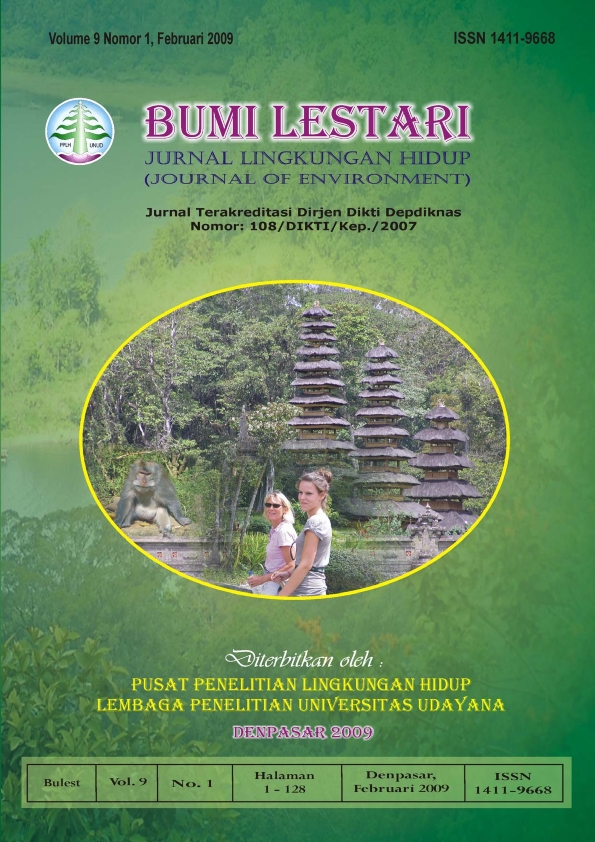“SELEKTIFITAS SPECIES” ALAT TANGKAP GARUK DI CIREBON, JAWA BARAT
Abstract
In order to understand the fishing gear characteristics of “garuk”, a traditional fishing gear in North Java Sea, study about species selectivity of garuk has been conducted in Cirebon, West Java. Using Shannon-Diversity Index and Dominance Index analysis the catch diversity and dominancy were analyzed. The result analysis showed that the number of species diversity of garuk varied between 0.8 – 1.2. On the other hand, result analysis of dominance index showed that the number varied between 0.3 – 0.5. This result indicated that garuk has low selectivity to target species.Downloads
Keywords
Authors who publish with this journal agree to the following terms:
- All articles published by Bumi Lestari Journal of Environment and Environmental Reseach Center Udayana University are made available under an open access license worldwide immediately. This means everyone has free and unlimited access to the full-text of all articles published in Bumi Lestari Journal of Environment, and everyone is free to re-use the published material given proper accreditation/citation of the original publication. Open access publication is supported by authors' institutes or research funding agency by payment of a comparatively article processing charge for accepted articles (See Author Fees). Bumi Lestari Journal of Environment and Environmental Reseach Center Udayana University publish articles under the Creative Commons Attribution License.
- Authors are able to enter into separate, additional contractual arrangements for the non-exclusive distribution of the journal's published version of the work (e.g., post it to an institutional repository or publish it in a book), with an acknowledgement of its initial publication in this journal.
- Authors are permitted and encouraged to post their work online (e.g., in institutional repositories or on their website) prior to and during the submission process, as it can lead to productive exchanges, as well as earlier and greater citation of published work (See The Effect of Open Access).





